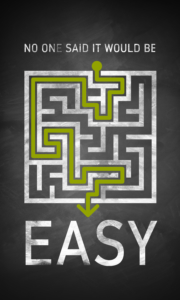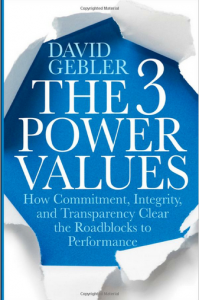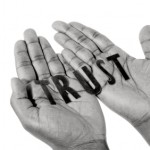Feeling Caught in the Middle? Lead with Trust
 Countless studies and articles show that trust and high performing teams are interlinked. One such study by The Great Place to Work Institute shows that high-trust organizations beat the average annualized returns of the S&P 500 by a factor of three.
Countless studies and articles show that trust and high performing teams are interlinked. One such study by The Great Place to Work Institute shows that high-trust organizations beat the average annualized returns of the S&P 500 by a factor of three.
Even though it’s clear that fostering a high-trust team environment is the right strategy for improved morale, collaboration, innovation, AND financials, why do so many leaders struggle?
Leaders have many dynamics to navigate: direct reports, leadership teams, organizational metrics as well as their own personal goals. Matrix organizations can make things even more complicated. Add the stress of managing through the current pandemic, global events and world economic challenges, and it’s easy to see how leaders might feel caught in the middle.
Most leaders want to do right by their teams by creating a positive, flourishing environment. But when the stress is high, how we behave doesn’t always align with how we want to be seen as leaders.
The Trust Equation shows us how our actions and behaviours can increase (or decrease) the level of trust in our relationships. It also provides a simple framework to help leaders walk their talk and build trust with their teams.
- Credibility is much more than the number of degrees hanging on a wall or awards sitting on a desk. As a leader, credibility becomes less about your technical capabilities and more about how you communicate. What message are you sending and to whom? Are you clear about your purpose and expectations? Do you communicate intentionally and with full transparency so no one on the team feels “out of the loop”? Credibility is about communicating with honesty and integrity, even when the messages are hard, or you don’t have all the answers.
- Reliability means being dependable and predictable; it’s how you show up to people day in and day out. If you’re friendly and at ease one day and a tyrant the next, your team will end up walking on eggshells, not really sure which version of you they might encounter. As a leader, your actions (and equally your lack of action) have impact. Do your actions support and empower your team? How consistent is what you say with what you do? Your team members will take their cue from you—what messages do your actions send?
- Intimacy is all about safety. It is created through empathy, discretion, and personal risk-taking. It must be built individually with team members and encourages among the team as a whole. How vulnerable and open are you with your team? Do you encourage others to share their thoughts and emotions, and are you open to hearing what they might say? How do you encourage discussion and healthy conflict? What happens when someone on the team makes a mistake? Your reactions as a leader will set the tone for the entire team.
- Self-Orientation shows your team where your focus is and what motivates you. How are you showing your commitment and attention to your team and your joint goals, versus your own personal agenda? Spotting a leader who only manages up is easy. Less obvious is a leader who is doubtful, stressed or unsure – all triggers of high self-orientation. When our “S” is high, we know we need to focus on the long term and think strategically, but we may find ourselves diving deep, nit-picking and second guessing team members. Creating a high-trust environment requires trusting the team to do their work, even if they do the work differently than you. Build collaboration and trust by focusing on the big picture, seeking to understand others and elevating the contributions of the team.
Building a team with trust takes mindful practice, especially when you feel caught in the middle of competing pressures and priorities. The best leaders dedicate themselves to creating a culture where their people feel heard, respected, safe and appreciated. Frame your leadership around the Trust Equation and watch your culture flourish, even in the most stressful times.
For more on this topic, check out our eBook How To Create a Culture of Trust and watch my free webinar Caught in the Middle – Leading with Trust in Times of Stress.

 This is the tenth in a series called
This is the tenth in a series called  This post comes from our upcoming book,
This post comes from our upcoming book,